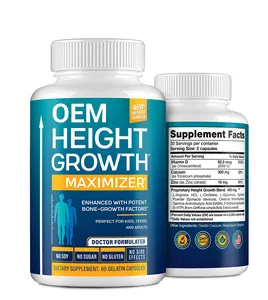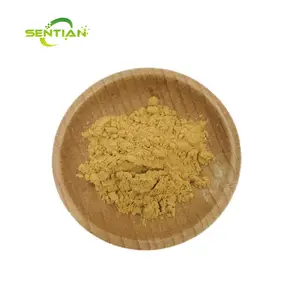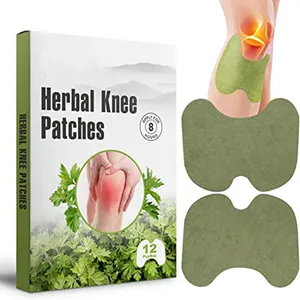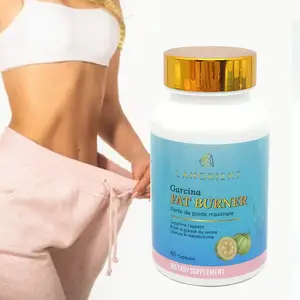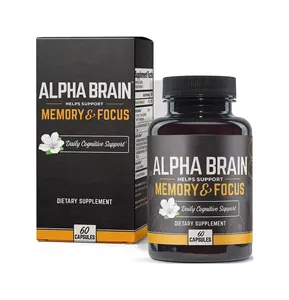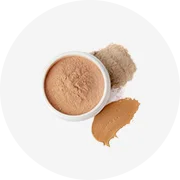आपके उद्योग में लोकप्रिय






7075 एल्यूमिनियम शीट 7075 शराब के ढक्कन और कॉइल के लिए पंचिंग और छिद्रण मशीन वेल्डिंग और काटने की सेवाएं
$2,000.00
न्यूनतम ऑर्डर: 5 टन







पूर्ण स्वचालित छिद्रित जिप्सम बोर्ड मशीन जिप्सम बोर्ड perforating पंचिंग मशीन
$20,000.00
न्यूनतम ऑर्डर: 1 सेट







फैक्टरी मूल्य उच्च गुणवत्ता वाले गोल स्टेनलेस स्टील छिद्रित प्लेट शीट पंचिंग नेट
$2.79 - $3.99
न्यूनतम ऑर्डर: 1 वर्ग मीटर







स्टील गैल्वनाइज्ड प्रोफाइल धातु छिद्रित दीवार कोण जेड कॉर्नर मनका
$0.15 - $0.17
न्यूनतम ऑर्डर: 2000 नग







उच्च गुणवत्ता वाले कारखाने कीमत 304 316 1x1m 1.22x2.44m छिद्रित धातु शीट/जाल
$9.80 - $10.50
न्यूनतम ऑर्डर: 100 नग






चीन फैक्ट्री हॉट रोल्ड छिद्रित शीट्स मौसम प्रतिरोधी कॉर्टन एबी स्टील प्लेट
$500.00 - $700.00
न्यूनतम ऑर्डर: 10 टन






फैक्टरी प्रत्यक्ष फाड़ना के लिए गोल छेद छिद्रित स्टेनलेस स्टील शीट छत
$2,000.00 - $3,000.00
न्यूनतम ऑर्डर: 1 मीट्रिक टन






चीनी फैक्टरी छिद्रित शीट 50*50 गैल्वेनाइज्ड स्टील संरचनात्मक गैल्वेनाइज्ड
$540.00 - $580.00
न्यूनतम ऑर्डर: 5 टन






उच्च गुणवत्ता पेशेवर एल्यूमीनियम शीट फैक्टरी 1-8 श्रृंखला 4x8 छिद्रित एल्यूमीनियम शीट
$490.00 - $640.00
न्यूनतम ऑर्डर: 5 टन












संबंधित खोजें:
परफोरेटर रसीद शीटछिद्रित प्लास्टिक सामग्री शीटफैक्टरी छिद्रित प्लास्टिक शीटधातु जाल प्रबलित रबर शीटछेद जाल शीटछिद्रित फाइबरग्लास शीटनेप्रोन छिद्रित शीटडाटा धातु शीटस्लिटेड परफोर्मेशन शीटफैक्टरी शीट प्लास्टिक छिद्रितप्लास्टिक लेपित छिद्रित शीटपारफोरेटर धातु शीटपीपी छिद्रित शीटछिद्रित/छिद्रित धातु शीटशीट छिद्रीकरण






हॉट सेल्स फैक्ट्री निर्माण पीपीजीआई नालीदार गैल्वेनाइज्ड स्टील शीट्स छिद्रित आईबीआर स्टील रूफिंग मेटल पैनल
$493.00 - $550.00
न्यूनतम ऑर्डर: 1 टन






फैक्टरी आपूर्तिकर्ता शीट 1 मिमी 3 मिमी 5 मिमी 6 मिमी छिद्रित पतली धातु काले गैल्वेनाइज्ड स्टील शीट
$600.00 - $675.00
न्यूनतम ऑर्डर: 1 टन






5 मिमी एमएस छिद्रित शीट धातु 1.2 मिमी 1.5 मिमी एसटी37 एस235जेआर क्यू195 क्यू345 हॉट रोल्ड कार्बन स्टील प्लेट शीट हॉट रोल्ड स्टील शीट
$450.00 - $580.00
न्यूनतम ऑर्डर: 10 टन






फैक्टरी प्रत्यक्ष बिक्री कम कीमत Dx51d Dx52d Dx53d 0.6 मिमी Thk गैल्वेनाइज्ड स्टील शीट
$411.00 - $632.00
न्यूनतम ऑर्डर: 1 टन






उच्च गुणवत्ता 2mm स्टेनलेस स्टील के दौर छेद जस्ती विरोधी जंग छिद्रित जाल पैनल/छिद्रित स्टील शीट
$2.00
न्यूनतम ऑर्डर: 500 वर्ग मीटर






फैक्ट्री डायरेक्ट सप्लाई एएसटीएम ए36 क्यू235 एसएस400 कार्बन माइल्ड स्टील शीट / एसएस400 कार्बन एमएस स्टील प्लेट
$560.00 - $680.00
न्यूनतम ऑर्डर: 5 टन






चीन कारखाने थोक क्यू 175 e24 q235b मध्यम परिपुष्ट कार्बन स्टील शीट निर्माता
$500.00 - $550.00
न्यूनतम ऑर्डर: 25 टन












कारखाने की आपूर्ति आयताकार पंचिंग बोर्ड सजावटी धातु छिद्रित जाल शीट
$9.70 - $18.60
न्यूनतम ऑर्डर: 1 वर्ग मीटर






ज़िंगे फैक्ट्री उच्च गुणवत्ता वाली गैल्वेनाइज्ड स्टील शीट की आपूर्ति करती है
$550.00 - $570.00
न्यूनतम ऑर्डर: 25 मीट्रिक टन






हॉट रोल्ड कार्बन स्टील प्लेट गोल छेद छिद्रित धातु शीट Q235GJ SN400 SN490 OEM सीएनसी लेजर कटिंग टियांजिन फैक्टरी
$500.00 - $650.00
न्यूनतम ऑर्डर: 5 टन






फैक्टरी आपूर्तिकर्ता कम कीमत Z60 Z30 जस्ता कोटेड शीट 0.8 मिमी 0.6 मिमी गैल्वेनाइज्ड स्टील शीट प्लेट
$620.00 - $750.00
न्यूनतम ऑर्डर: 1 टन






प्रीपेंटेड हॉट डिप्ड गैल्वेनाइज्ड नालीदार स्टील मेटल रूफ प्लेट आयरन रूफिंग शीट कीमत रंग लेपित स्टील शीट
$585.00 - $625.00
न्यूनतम ऑर्डर: 5 टन






भवन निर्माण के लिए फैक्ट्री डायरेक्ट सेल्स कार्बन एमएस 2 मिमी क्यू235बी क्यू345 एएसटीएम ए36 हॉट रोल्ड ब्लैक मेटल आयरन स्टील प्लेट शीट
$400.00 - $600.00
न्यूनतम ऑर्डर: 5 टन












शीर्ष गुणवत्ता वाली गैल्वनाइज्ड शीट धातु छत कीमत/जीआई नालीदार छत शीट/जस्ता छत शीट लोहे की छत शीट
$380.00 - $480.00
न्यूनतम ऑर्डर: 10 टन






कम कीमत 4x8 नालीदार धातु शीट 3 मीटर नालीदार छत शीट रंग लेपित धातु छत
$0.59 - $0.68
न्यूनतम ऑर्डर: 1 नग






फ़ैक्टरी Dx51d Dx52D SGCC Z150 जिंक एल्यूमिनियम Gi गैल्वेनाइज्ड नालीदार छत स्टील शीट
$530.00 - $590.00
न्यूनतम ऑर्डर: 5 टन






ट्रांसफार्मर सिलिकॉन स्टील शीट की स्पॉट आपूर्ति उच्च गुणवत्ता वाली मिश्र धातु स्टील प्लेट प्रदान करती है
$0.51 - $0.56
न्यूनतम ऑर्डर: 1000 किलोग्राम






भवन निर्माण सामग्री के लिए फैक्टरी मूल्य 4 फीट 8 फीट जिंक स्टील गैल्वेनाइज्ड स्टील शीट कॉइल पैनल शीट
$499.00 - $589.00
न्यूनतम ऑर्डर: 1 टन






फैक्टरी मूल्य स्टेनलेस स्टील शीट 304 1 5 मिमी 201 316 301 200 सीरीज
$1,200.00 - $1,450.00
न्यूनतम ऑर्डर: 1 टन






फैक्टरी मूल्य Astm A36 हॉट रोल्ड कार्बन स्टील शीट लुढ़का स्टील उत्पादों
$350.00 - $500.00
न्यूनतम ऑर्डर: 5 टन






फैक्टरी मूल्य स्टेनलेस स्टील गोल/वर्गाकार छेद वाली छिद्रित धातु शीट
$66.80 - $68.00
न्यूनतम ऑर्डर: 10 नग












चीन कारखाने थोक क्यू 175 e24 q235b मध्यम परिपुष्ट कार्बन स्टील शीट निर्माता
$500.00 - $600.00
न्यूनतम ऑर्डर: 1 टन
परिवर्तक शीट फैक्टरी के बारे में
Alibaba.com 6802 परिवर्तक शीट फैक्टरी उत्पादों की पेशकश करता है. परिवर्तक शीट फैक्टरी विकल्पों की व्यापक विविधता आपके लिए उपलब्ध है, जैसे astm, gb, और जिस. आप झुकने, वेल्डिंग, और छिद्रण परिवर्तक शीट फैक्टरी से भी चुन सकते हैं. साथ ही कार्बन स्टील, q235, और q195 परिवर्तक शीट फैक्टरी से भी चुन सकते हैं. और फिर चाहे परिवर्तक शीट फैक्टरी हो कोल्ड रोल्ड, पोलिश, या जस्ती हो.
